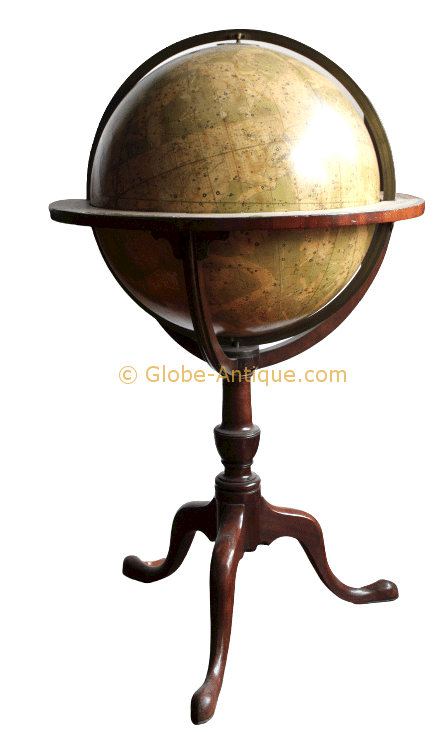Description
Library floor celestial globe , signed by Cruchley in London. 21 inches.
Cruchley’s, new celestial globe on which is accurately laid down the whole of the stars and nebule contained in the astronomical catalogue of the Reverend Mr Wollaston F.R.S.
Also from the authorities Flamsted, De La Caille, Hevelius, Mayer, Bradley, Herschel, Maskelyne, &c.
Ands the limits of each constellation determined by a boundary line.
London. published by G.F Cruchley, map-seller & globe maker, 81 Fleet street.
The globe mounted on a tripod mahogany foot
Explore the heavens of yesteryear with our curated selection of antique celestial globes.
Visit our website to browse our catalog and find the perfect celestial treasure to add to your collection.
With worldwide shipping and expertly sourced pieces, www.globe-antique.com is your destination for timeless celestial wonders.
Our collection of celestial globes offers a glimpse into the celestial wonders of centuries past.
These exquisite artifacts not only serve as valuable historical pieces but also as stunning decorative items for your home or office.
George Frederick Cruchley (1797-1880) was a prominent English globe maker and map publisher during the 19th century. He is known for his contributions to cartography, particularly in the production of maps and globes.
Here is some information about George Frederick Cruchley:
George Frederick Cruchley began his career as an apprentice to the well-known London map and globe maker Aaron Arrowsmith.
During his apprenticeship, Cruchley honed his skills in map engraving and globe making, which would later serve as the foundation for his own successful business.
In 1823, Cruchley established his own map and globe business at 81 Fleet Street, London. His business quickly gained a reputation for producing high-quality maps and globes.
Cruchley was renowned for his terrestrial and library floor celestial globe. He produced a range of globes in various sizes, from small tabletop versions to larger floor-standing globes. These globes were both decorative and educational, serving as important tools for teaching geography and astronomy during the 19th century.






